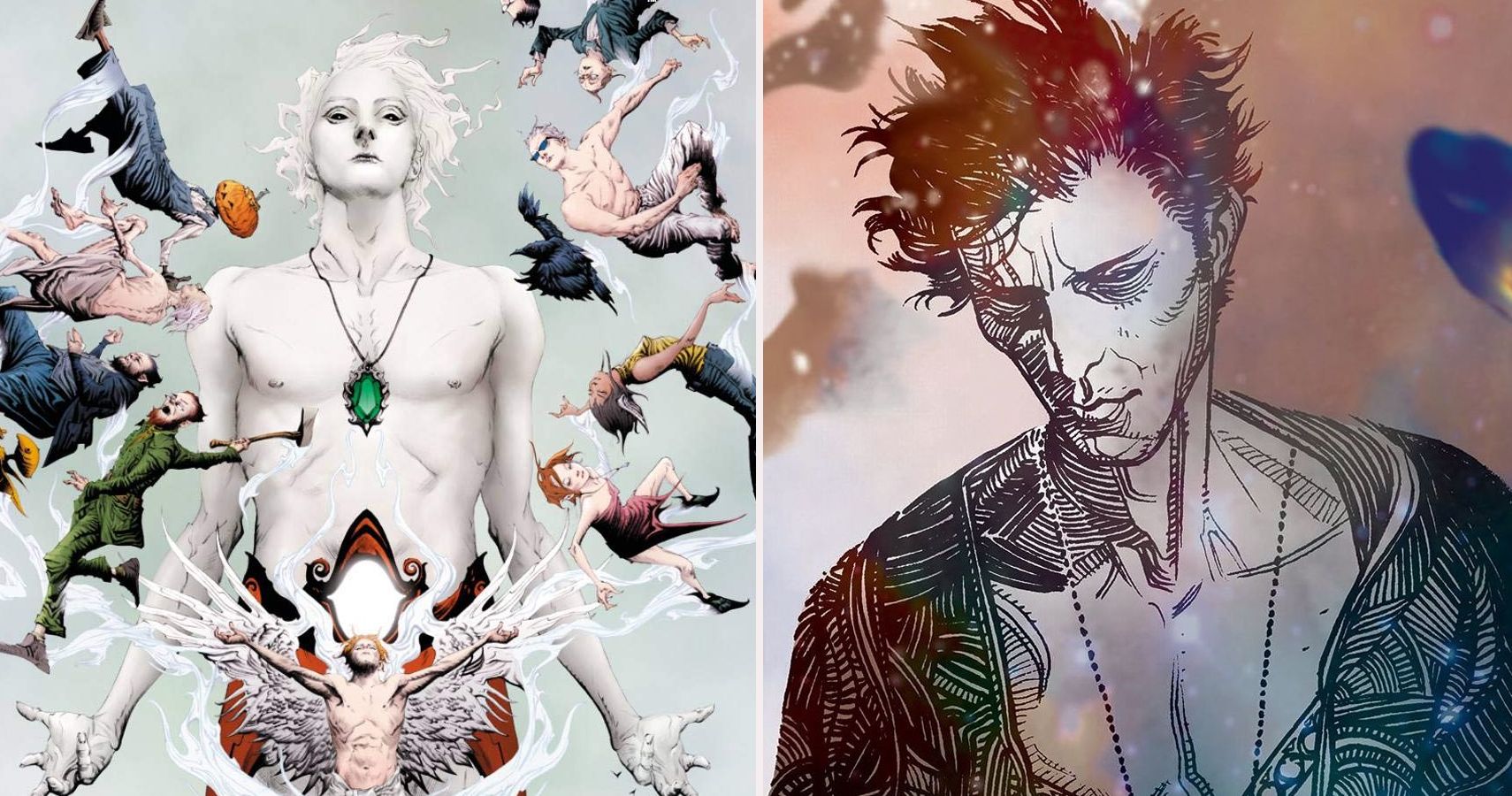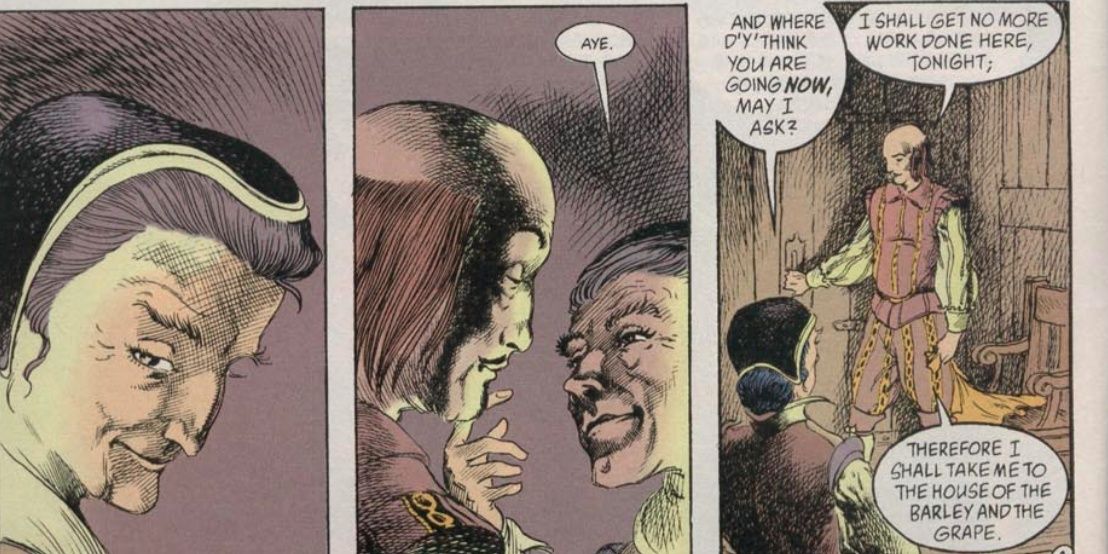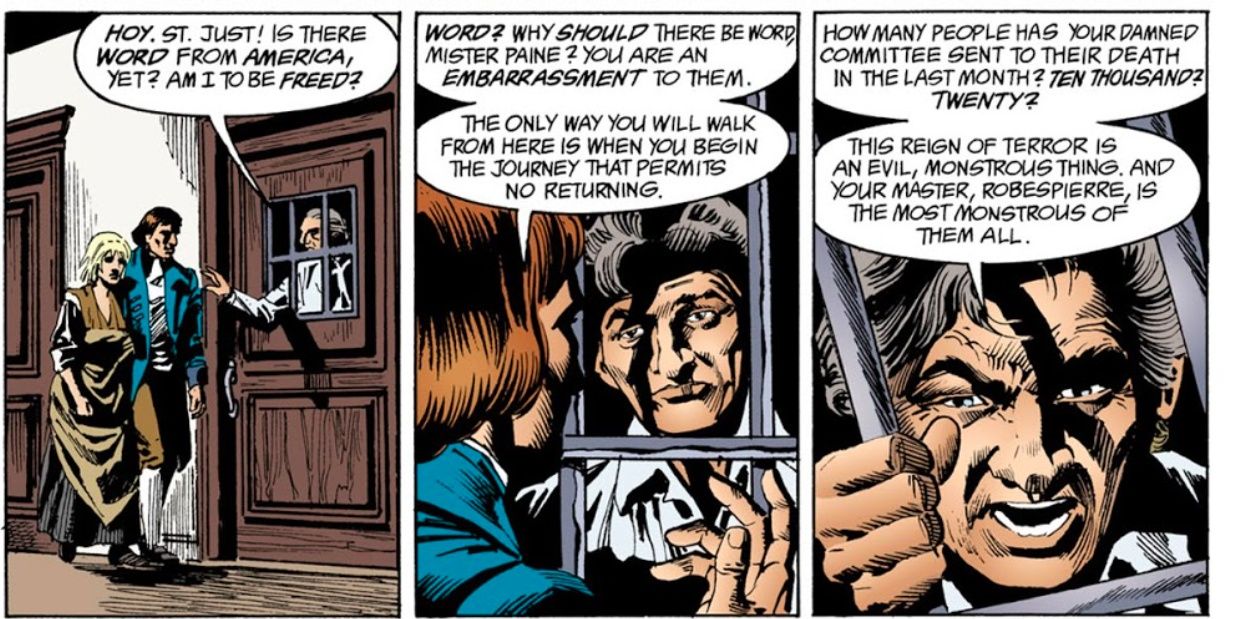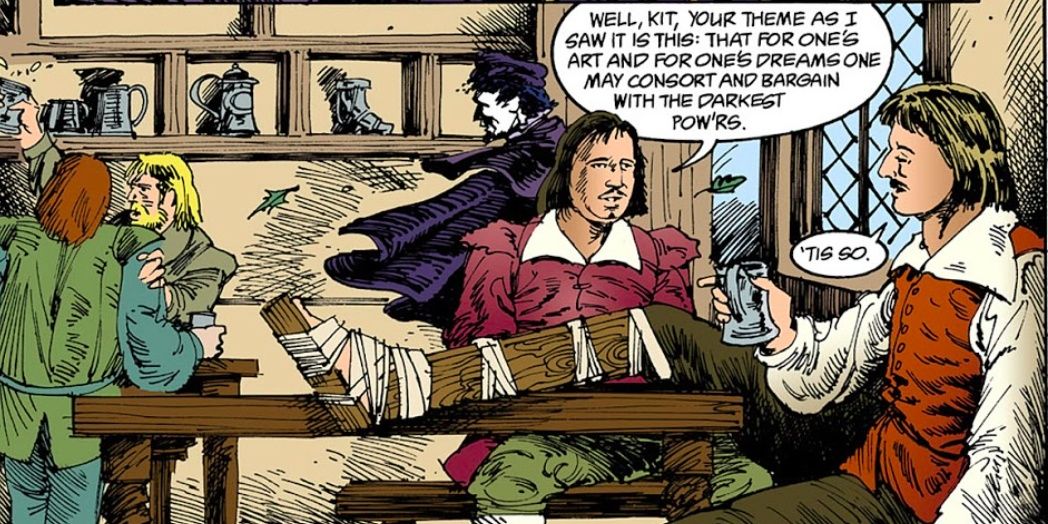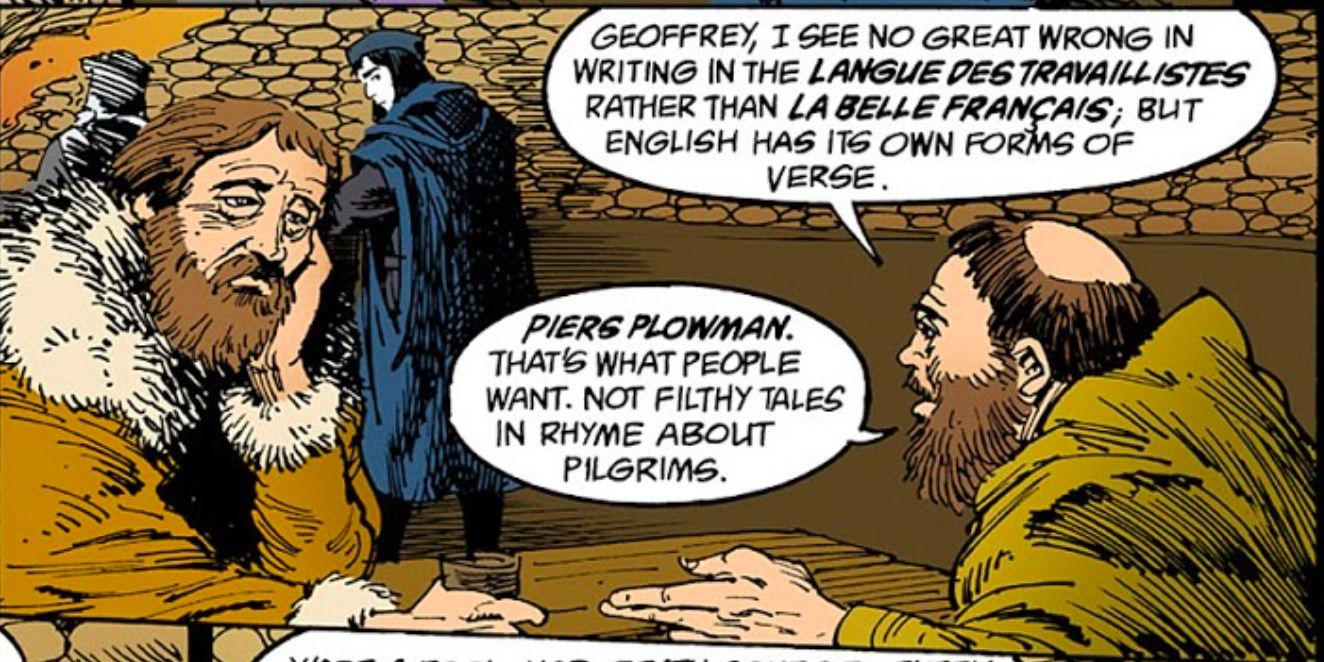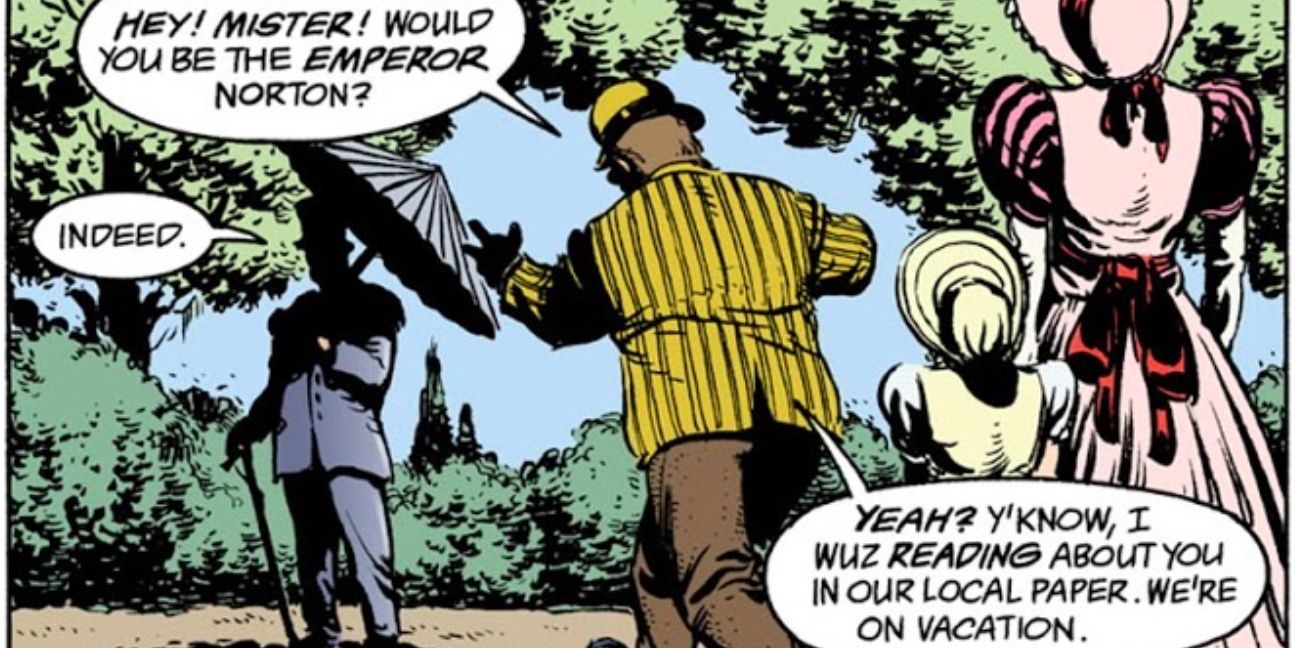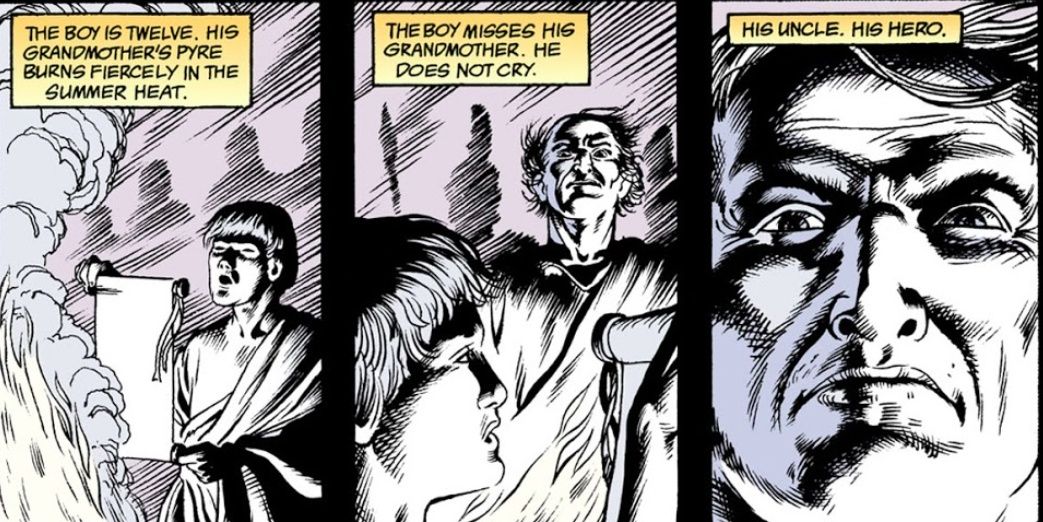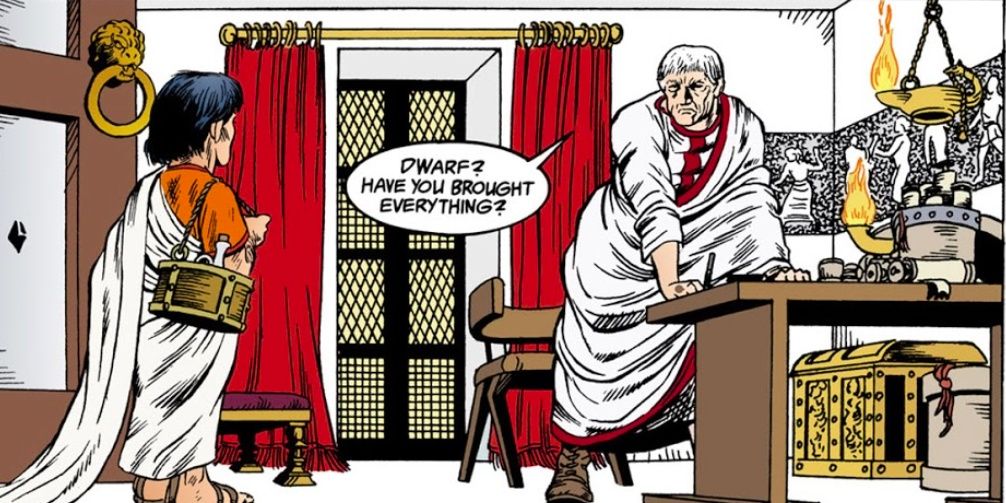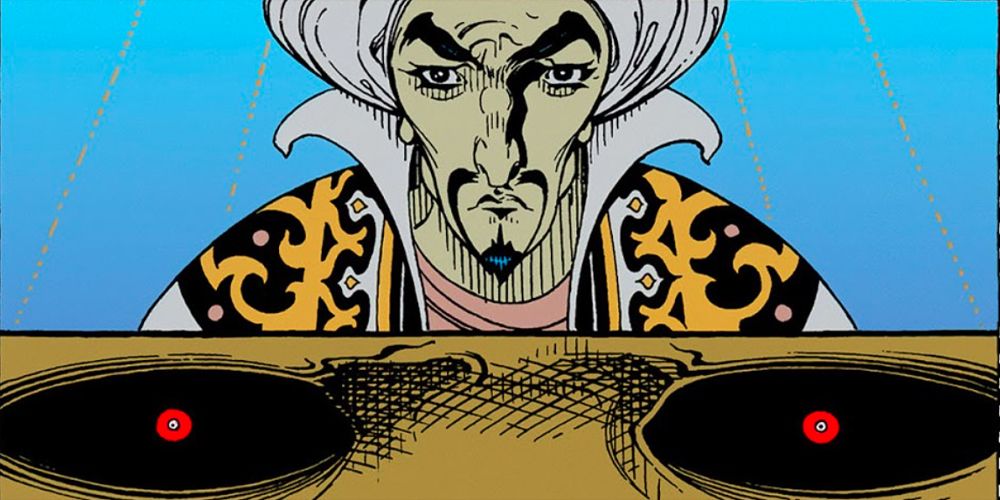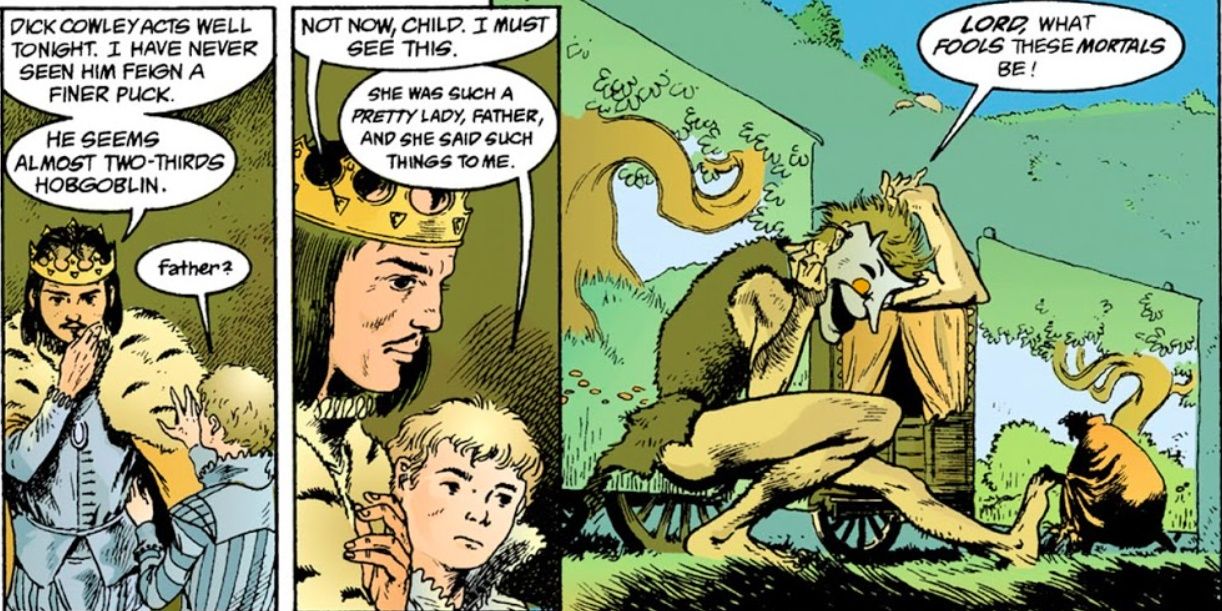Every so often, a comic comes along that explodes onto the scene as a fresh, groundbreaking work of storytelling that changes the game forever. Neil Gaiman's '90s classic The Sandman is one such comic. This philosophical series follows Dream of the Endless, an omnipotent god who rules over the realm of the Dreaming.
While dreams are the substance of pure imagination, the series features quite a lot of real historical figures, showing how dreams directly influenced the real world (and how real people left their mark on the Dreaming). These are the ten most memorable real people to appear as characters in Neil Gaiman's The Sandman.
10 Anne Hathaway
While most people are probably more familiar with Anne Hathaway as the name of the Hollywood actress who played Catwoman in The Dark Knight Rises, the name also belonged to another important person in the acting world: The wife of William Shakespeare.
In one of the most tender moments of the series, Shakespeare speaks with his wife, the two of them loving but estranged in their later years, having both endured the loss of a child.
9 Thomas Paine
The philosopher Thomas Paine was one of the most influential political thinkers of the Enlightenment and helped to kickstart the American Revolution. To him, the Revolution was not a mere war. He dreamed up revolutionary ideas about liberty, egalitarian principles, and a better world.
During the events of the French Revolution, Paine was arrested by one of the factions, and it is here in his prison cell that he is encountered during the events of The Sandman.
8 Marco Pollo
One of the interesting small encounters in the comic features the legendary explorer Marco Polo and his biographer, Rustichello de Pisa. The events that transpired when he was crossing the Desert of Lop are recreated in the pages of The Sandman as Marco Pollo is separated from his caravan. This dreamlike place subjects him to a series of hallucinogenic encounters when spectral figures, including his own father.
The overlap of historicism and surrealist dreamscapes is poignant. Marco Pollo plays a small role in the grander narrative, but a noteworthy one.
7 Christopher Marlowe
Shakespeare may be remembered as the greatest writer in the history of the English language, but during his lifetime, he was considered the second best. The favorite writer of Elizabethan England was Christopher Marlowe.
Marlowe's friendship with Shakespeare has a tragicomedic feel in the comic, appropriately representative of both men's work. At one point, Marlowe reads a particularly bad line of dialogue Shakespeare wrote. When Shakespeare protests that it is his first play, Marlowe tells him it should be his last.
6 Geoffrey Chaucer
In the ivory towers of academia, an old saying asserted that the three greatest writers in the history of the English language were Chaucer, Shakespeare, and Milton. Whatever one thinks of this claim, two out of the three appear in the thirteenth issue of The Sandman.
Though Chaucer has a small role, it is in one of the most unforgettable stories in the whole series, focusing on the character of Hob Gadling, who decides one day that he refuses to die. Dying is for suckers and he has no intention of doing it just because everyone else does. It is a story as comedic and tragic as one might find in Chaucer's Canterbury Tales.
5 Emperor Norton
The Emperor of the United States of America, Norton I (born Joshua Abraham Norton) is a fun historical figure. He was born to Jewish parents in England, but upon migrating to the United States, he moved to San Francisco and declared himself Emperor, where he helped solve local conflicts within the area and even printed his own money. To this day, he is regarded as a saint by the Discordian religion.
The story "Three Septembers and a January" stars Emperor Norton, who is favored by Dream but tempted by some of the other members of the Endless. At the end of his life when he finally meets Death, their exchange is one of the sweetest moments of the series.
4 Julius Caesar
While Julius Caesar is a major historical figure who looms large over the studies of Rome and European history as a whole, he is a minor character in The Sandman, and not portrayed kindly.
Having ascended to godhood since his death, the first Roman Emperor is remembered in the context of a rumor that Marc Antony spread about his carnal relationship with his young nephew, Octavian, who would later become Julius's heir, better known to history as Augustus.
3 Augustus Caesar
The 30th issue of The Sandman follows a day in the life of Augustus Caesar and is appropriately titled "August." As his uncle has ascended to godhood, Augustus wants a day alone with his thoughts, so he walks among his people in disguise.
This story is short and sweet...though maybe sweet is the wrong word, as the twist at the end reveals a dark secret from Augustus's past that has haunted him for the rest of his life.
2 Harun al-Rashid
Harun al-Rashid is best known in the English-speaking world as the Caliph of Baghdad in the tales of 1001 Nights, but he was a real historical figure who helped oversee many of the greatest achievements of the Golden Age of Islam.
The Harun of legend and his historical counterpart reconcile with one another. The Caliph lives amid clockwork miracles, powerful sorceries, wise sages of every faith, and pleasure palaces filled with beautiful men and women, yet he knows none of this can last. Fearing the end of his great reign, he calls on Dream of the Endless to immortalize the Baghdad of myth.
1 William Shakespeare
This final entry should not come as a surprise since he was referenced in at least two other entries. The great playwright William Shakespeare is a recurring character throughout The Sandman.
Early in the story, Shakespeare makes a bargain with Dream. In exchange for the fame and talent to pursue his craft in a way that makes his dreams come true, Shakespeare agrees to write two plays for Dream: His first and his last. In one issue, Shakespeare gives the very first performance of A Midsummer Night's Dream to an audience of the Fey. This story also won a World Fantasy Award for Best Short Story – the last comic to ever do so, as the morning after the award ceremony, the rules were changed to keep it from ever happening again.

